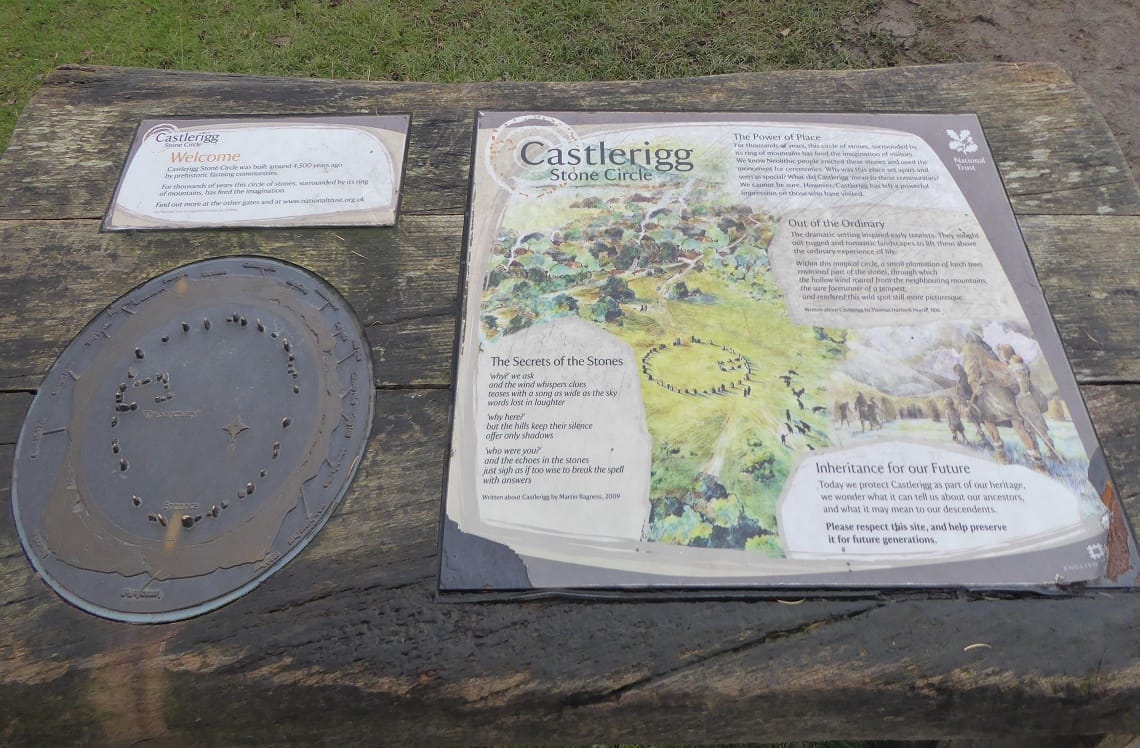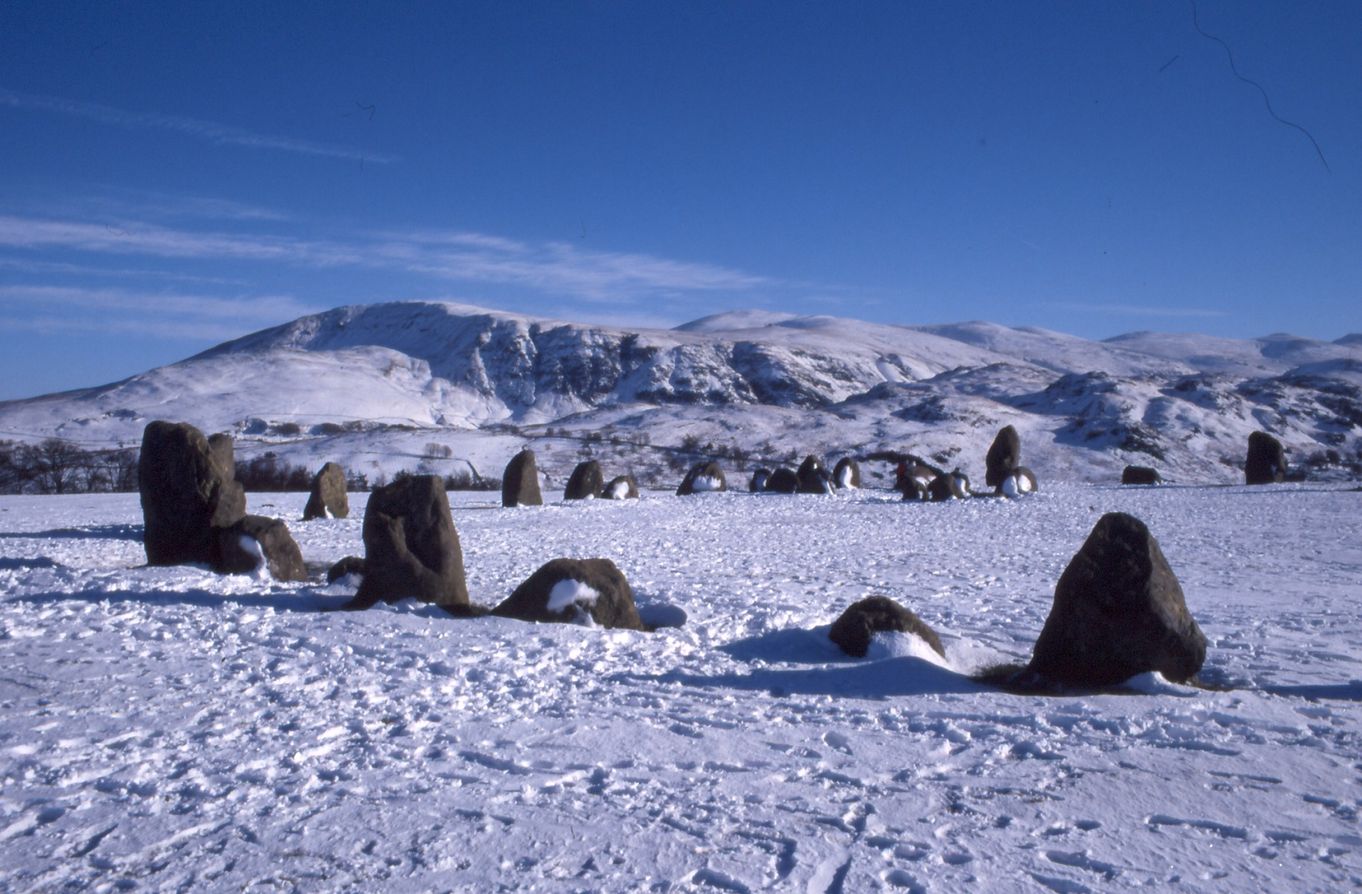Castlerigg Stone Circle

One of Britain's most impressive prehistoric monuments sits on a low hill to the east of Keswick with a ring of mountains surrounding it. Castlerigg Stone Circle is one of the earliest stone circles to be found in Britain and is important in terms of megalithic astronomy and geometry.
Castlerigg Stone Circle stands on a superb natural plateau commanding a superb 360 degree view over the surrounding fells. It is composed of 38 free standing stones, some up to 3 metres (10 feet) high. It is one of Britain's earliest stone circles dating back to the Neolithic period 4000 to 5000 years ago. Try counting the number of standing stones, can you come up with the same number twice...?
The original purpose of the site is unknown. It could have been used as a trading post. Three stone axes have been discovered inside the circle. In the Neolithic period axes were made from volcanic stone quarried in the fells. Other possible uses include a meeting place for social gatherings, a site for religious ceremonies and rituals or even an astronomical observatory with the stones being aligned to the sun, moon and stars.
Castlerigg Stone Circle was one of the first sites to be covered under the Ancient Monuments Protection Act in 1888 and in 1913 it was acquired by the National Trust through the efforts of Canon Rawnsley. It is situated on land owned by the National Trust and maintained by English Heritage.
Getting to Castlerigg Stone Circle from Keswick
Castlerigg Stone Circle is located 1.5 miles south east of Keswick. Grid Reference NY291236, what3 words ///deodorant.pinks.pounce. There is limited roadside free parking at the site. Admission is free.
You can download a circular walk from Keswick to Castlerigg Stone Circle here.
Roman Fort Found near Keswick
A Roman camp, said to be of national significance, has been discovered on the outskirts of Keswick. The discovery, near the famous Castlerigg Stone Circle, is thought to date back to the first century and has solved a mystery spanning hundreds of years. Historians always predicted there was a Roman presence in the Keswick area and now the underground remains of an ancient structure the size of eight football pitches has been found.The site, two miles east of the town, was almost certainly a base for soldiers campaigning north of the Border or resting on their return. The remarkable chance breakthrough came as a team of volunteers working with the Bassenthwaite Reflections programme were searching for a second stone circle or 14th century castle at the prehistoric Castlerigg site. Armed with magnetometers instruments which can detect buried walls the team stumbled on a giant enclosure which experts say is probably a missing link in a jigsaw plotting the Roman occupation of Cumbria.Leading the search, archaeologist Mark Graham said he thought there was little doubt that the 200m by 200m find, with interesting curved corners, was a temporary camp, capable of holding large numbers of troops.He explained: “It could have been an important part of the first push to ‘Romanise’ the area, perhaps as early as 70AD , a militarisation that extended across the county for 300 years. It possibly serviced campaigns into Scotland and acted as a base for soldiers heading north, or withdrawing.” English Heritage has been informed and while there are no immediate plans to organise a formal dig, Mr Graham said it would be the only way to accurately date the structure. Further exploration could also reveal important artefacts.“There is quite literally nothing to see above ground,” he said. “In fact, the land was ploughed until 30 years ago and is now used for hay and grazing. But standing on the site, it’s clear to see why it was chosen.“In sight of Castlerigg Stone Circle, which was already 3,000 years old at the time of the Roman occupation, the elevated position was strategically well placed for defence. It also has lovely views over Bassenthwaite and to other Roman camps at Troutbeck.”




